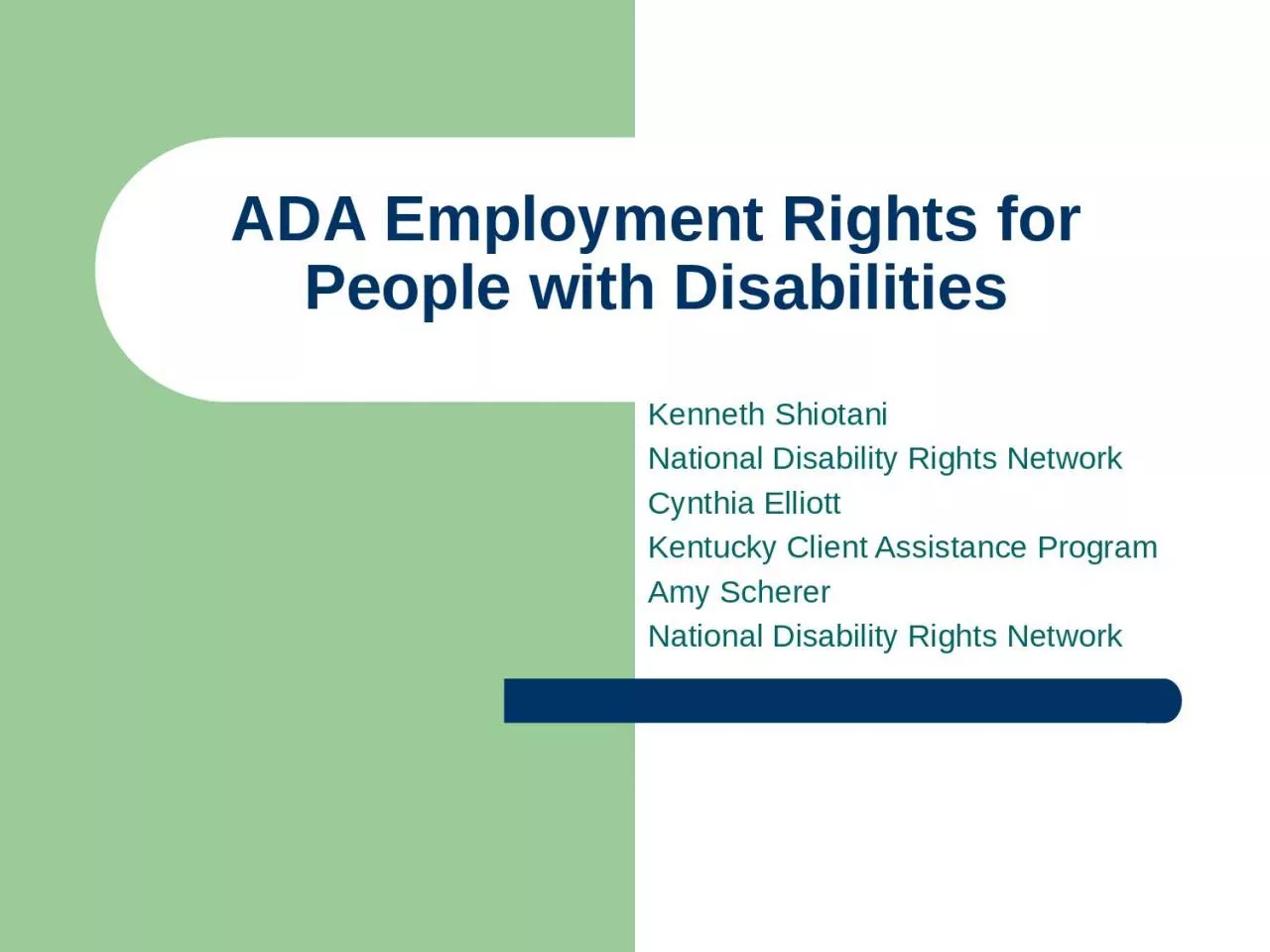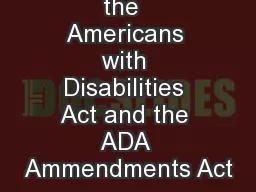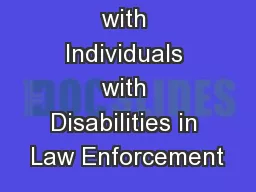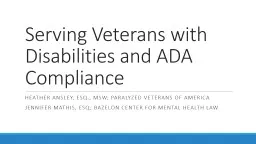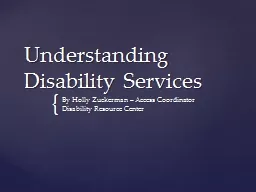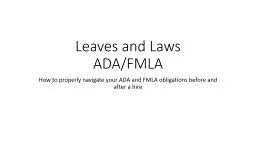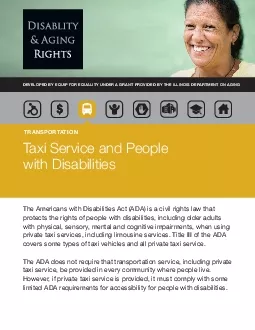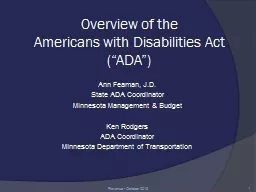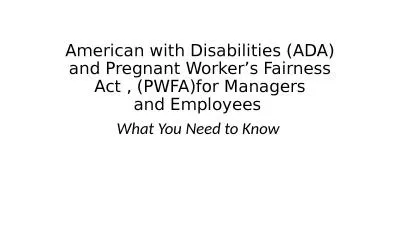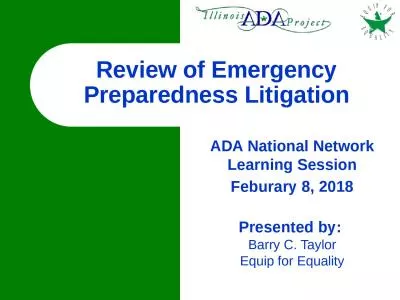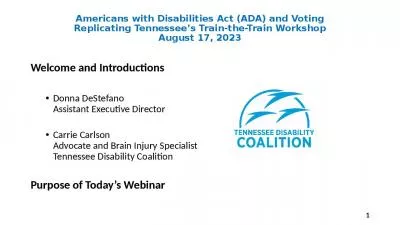PPT-ADA Employment Rights for People with Disabilities
Author : elizabeth | Published Date : 2024-01-03
Kenneth Shiotani National Disability Rights Network Cynthia Elliott Kentucky Client Assistance Program Amy Scherer National Disability Rights Network Topics Overview
Presentation Embed Code
Download Presentation
Download Presentation The PPT/PDF document "ADA Employment Rights for People with Di..." is the property of its rightful owner. Permission is granted to download and print the materials on this website for personal, non-commercial use only, and to display it on your personal computer provided you do not modify the materials and that you retain all copyright notices contained in the materials. By downloading content from our website, you accept the terms of this agreement.
ADA Employment Rights for People with Disabilities: Transcript
Download Rules Of Document
"ADA Employment Rights for People with Disabilities"The content belongs to its owner. You may download and print it for personal use, without modification, and keep all copyright notices. By downloading, you agree to these terms.
Related Documents

